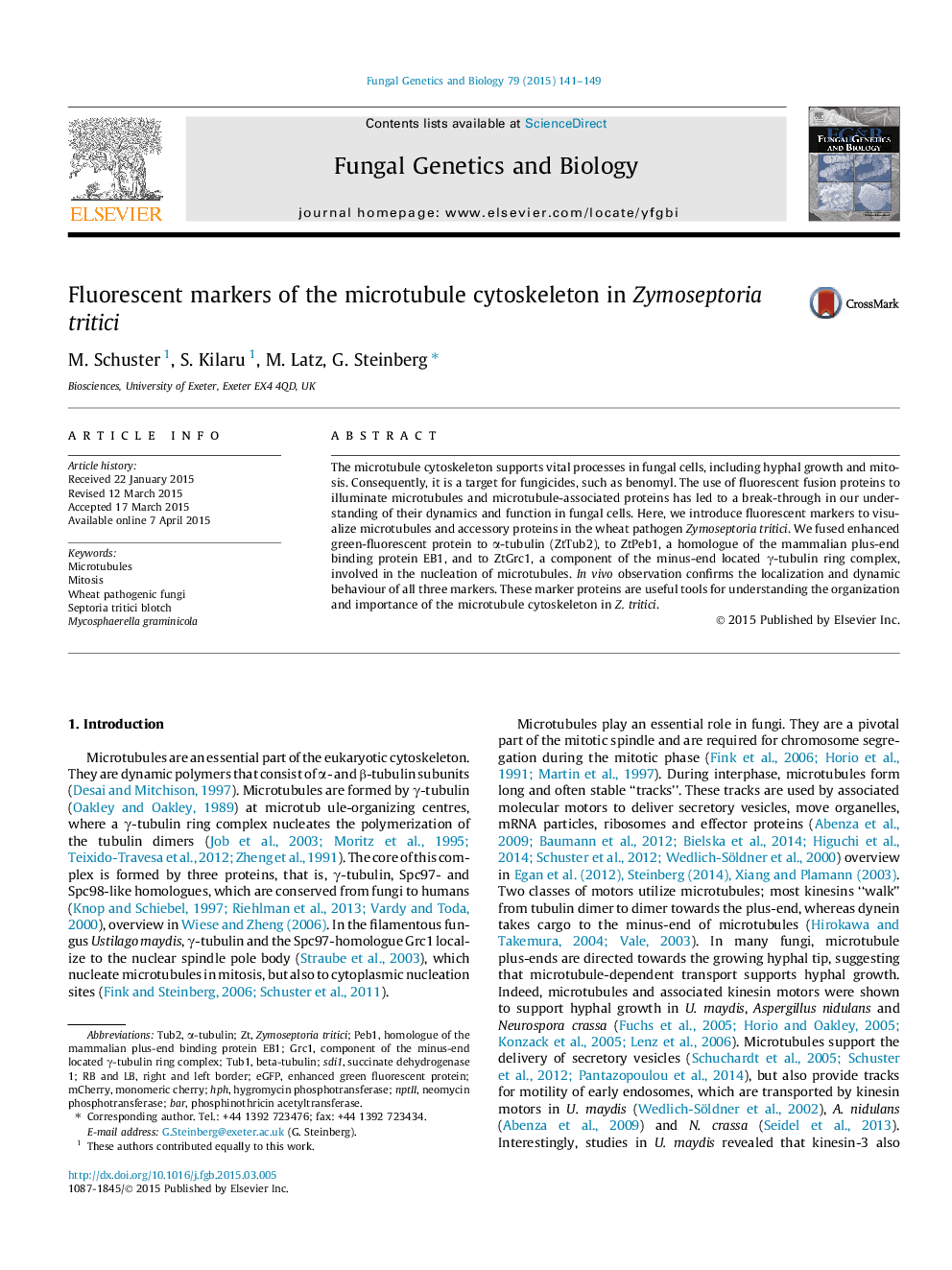| Article ID | Journal | Published Year | Pages | File Type |
|---|---|---|---|---|
| 8470748 | Fungal Genetics and Biology | 2015 | 9 Pages |
Abstract
The microtubule cytoskeleton supports vital processes in fungal cells, including hyphal growth and mitosis. Consequently, it is a target for fungicides, such as benomyl. The use of fluorescent fusion proteins to illuminate microtubules and microtubule-associated proteins has led to a break-through in our understanding of their dynamics and function in fungal cells. Here, we introduce fluorescent markers to visualize microtubules and accessory proteins in the wheat pathogen Zymoseptoria tritici. We fused enhanced green-fluorescent protein to α-tubulin (ZtTub2), to ZtPeb1, a homologue of the mammalian plus-end binding protein EB1, and to ZtGrc1, a component of the minus-end located γ-tubulin ring complex, involved in the nucleation of microtubules. In vivo observation confirms the localization and dynamic behaviour of all three markers. These marker proteins are useful tools for understanding the organization and importance of the microtubule cytoskeleton in Z. tritici.
Keywords
Septoria tritici blotchtub1eGFPright and left borderHPHRB and LBmCherrynptIIsdi1Mycosphaerella graminicolaTub2α-TubulinBARBeta-tubulinsuccinate dehydrogenase 1Phosphinothricin AcetyltransferaseZymoseptoria triticiNeomycin phosphotransferaseMitosisMicrotubuleshygromycin phosphotransferaseenhanced green fluorescent proteinmonomeric cherry
Related Topics
Life Sciences
Biochemistry, Genetics and Molecular Biology
Cell Biology
Authors
M. Schuster, S. Kilaru, M. Latz, G. Steinberg,
